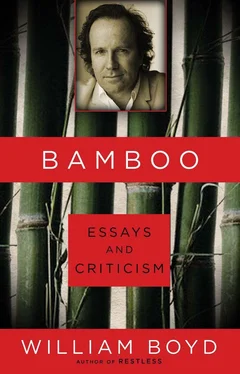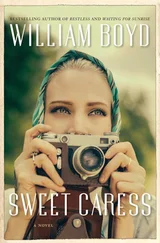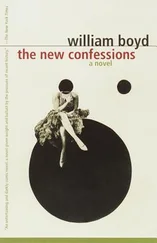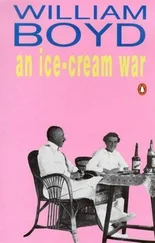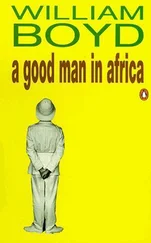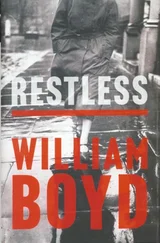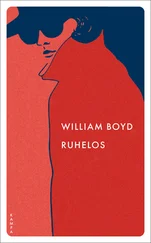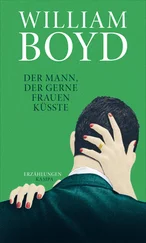And this is where I spend my day, venturing out at lunchtime a little further up Madison to E.A.T. (80th Street) — the closest thing to a New York brasserie (as opposed to a pseudo-French one) that the city provides. It welcomes many solo diners, which seems an almost forgotten pleasure these days. Eating a proper lunch alone (rather than a bite of something on the run) is an agreeable pastime but it mustn’t be rushed and needs to be accompanied by some sort of reading matter — book, newspaper or magazine. They don’t chase you out, either, when you’ve finished. You can easily spend an hour in E.A.T. reading and eating and covertly watching the people around you at the same time.
And afterwards, if you require more diversion, just a block away on 5th Avenue is the sprawling bulk of the Metropolitan Museum, an incomparable treasure trove and again the sort of museum, in my opinion, that favours the periodic half-hour visit rather than the day-long, enervating culture-trawl. And, if the Met doesn’t beguile, a couple of blocks north of E.A.T. is my favourite bookstore in the city — Crawford Doyle, another independent bookshop, which not only sells everything in print you might want to read (with great charm and friendliness) but has a thriving antiquarian business to tempt you as well.
The library shuts at the end of the working day and the second leg of my walk commences. I prefer not to walk back down Madison — it’s more of a morning thing, Madison Avenue — so I stroll along 79th, heading eastwards towards Lexington Avenue. This involves crossing Park Avenue and here you are afforded one of the great American vistas: the view south down Park Avenue towards the Met-Life building at its foot. It’s probably best at dusk, with some blue still left in the sky, but with enough gathering gloom to set the refulgent windows of the towering, lit buildings glowing like banked coals.
On to Lexington and a right turn southwards. Lexington is smaller (in that its buildings are lower), narrower and shabbier than its two adjacent avenues to the west and it provides a welcome contrast. From gleaming, pricey, exclusive New York, you enter a neighbourhood, a place where people actually live and shop for themselves. Gone are the designer stores, to be replaced by supermarkets, delis, Chinese laundries. Lexington has its own special bonus, however: as you walk south you are aiming for the Chrysler Building, the world’s most beautiful skyscraper, its silver, art deco, hypodermic needle gleaming gold — if you’re lucky — in the orange evening sun.
You start to walk up hill again, fairly soon, up the steeper rise of Lennox Hill, heading towards Hunter College (part of the City University of New York) with its two aerial pedestrian-ways crossing the avenue. Here there is an intriguing congregation of antique shops and, within the space of a few blocks, three more independent bookstores: Lennox Hill Bookstore (on 73rd), Bookberries (on 71st) and Shakespeare & Co. on 69th. All have their own distinct character and all are worth stopping in to browse. The hegemony of Borders and Barnes & Noble hasn’t — visibly — seemed to have affected independent bookselling in this part of the city, and a visit to any of the five on this walk will remind you of the advantages of plucky independence versus the chain store.
My pit-stop on the walk back is on 73rd, called the Cafe Word-of-Mouth. Downstairs is a takeaway, upstairs is almost a tea-room: Rennie Mackintosh meets art deco, all cherrywood and taupe. The last time I did this walk I inverted it — came up Lex, went down Mad. It had snowed in the night and there were foot-high banks of frozen snow on the sidewalks. It was bitter cold, with a wind that seemed to take the skin off your face. I stopped in Cafe Word-of-Mouth for sustenance. A big caffe latte, scrambled eggs and crispy bacon. I read the newspaper and thawed out, then plodded off up Lexington to the library, full and warm.
If you want alcohol on this walk you have to go into hotels (the Mark or the Carlyle on Madison) or go further afield to the bars of Third Avenue where you’re spoilt for choice. Though it’s worth remembering that you can go into any New York restaurant and just have a drink at the bar without any problems. There used to be a bar on Madison called the Madison Pub — a dark semi-basement — but it closed recently. Things come and go with astonishing swiftness in New York and the Upper East Side is no exception: in the last two years I’ve seen an entire skyscraper rise up from Park Avenue to dominate the view from my hotel room. A favourite cafe closed (where reputedly you could get the best espresso in Manhattan); a famous landmark bookstore — Books Etc. — went, almost overnight. But this walk up Madison and down Lexington seems to me to contain, for all its regular and sudden transformations, something that remains a representative mixture of the whole city. Fashion, commerce, philanthropic art, the quaint, the banal, the unique, the down-and-dirty, high culture and nail parlours.
It’s all down hill from Hunter College’s crossroads. Students mill about smoking, sprawl on the steps. They seem all to be foreign, reminding you of this city’s polyglot heritage, the welcome it gives (or gave) to immigrants. And indeed many of the shops on this last stretch down to 63rd and the hotel reflect that ethnic mix: pizza joints, kebab houses, Korean nail parlours, Chinese take-aways. And just at the end at the last block is A&B Stationers, home, it seems, to every foreign newspaper and magazine you could ask for. The British papers arrive twenty-four hours later and it seems bizarre, at six o’clock on a New York evening, to see the racks outside filled with the Guardian, Independent and the Telegraph . Bizarre but therefore somehow normal in this place, if the paradox doesn’t seem too forced. Nothing, in New York, is really surprising, when you come to think about it — once you’ve got over your surprise.
2000
12 May 1986-27 March 1997
It is 1985. I am thirty-three years old and I have just hit pay-dirt (that’s to say the modest seam of low-grade ore that is available to the literary novelist). My second novel, An Ice-Cream War, has just been published in France (under the title Comme Neige au Soleil) and it is a bona fide bestseller. I have been on a legendary book programme on French TV called Apostrophes, during which the equally legendary host, Bernard Pivot, has offered personally to reimburse any reader not captivated by Comme Neige au Soleil. “Adieu, la sereine neutralité,” cry the French newspapers. Pivot, whose integrity and scrupulous disinterestedness is renowned, has astonished everyone by his overt and candid enthusiasm for my novel and the whole affair has become a news event. For ten hours at the Paris Salon du Livre in the Grand Palais I sign copies to a never dwindling queue. My publishers, Editions André Balland, cannot believe what has happened. Champagne bottles are opened, euphoria reigns. It’s a literary gusher — the book sells and sells. High on the bestseller lists, it racks up the sales figures: 30, 40, 50,000. On and on it goes, selling, in its first year, over 100,000 copies.
Now, foreign publishers have an easier fiscal ride than domestic ones. In Britain, your publisher presents accounts twice a year and pays the royalties owing at the same time. Abroad, the norm is different. A year after publication the figures are added up, and three months after that the cheque, if one is forthcoming, is delivered. My advance for An Ice-Cream War was approximately £2,000. I knew how many copies it had sold and it didn’t take a mathematical genius to calculate that, fifteen months after publication, with sales of over 100,000, I was due a pretty significant royalty cheque. Authors may grumble at the delay in these payments: the book makes all this money but the publisher doesn’t have to settle with you for over a year (what happens to the interest?) but that is the nature of the beast, la règle du jeu: just be grateful that for once your luck held up.
Читать дальше
